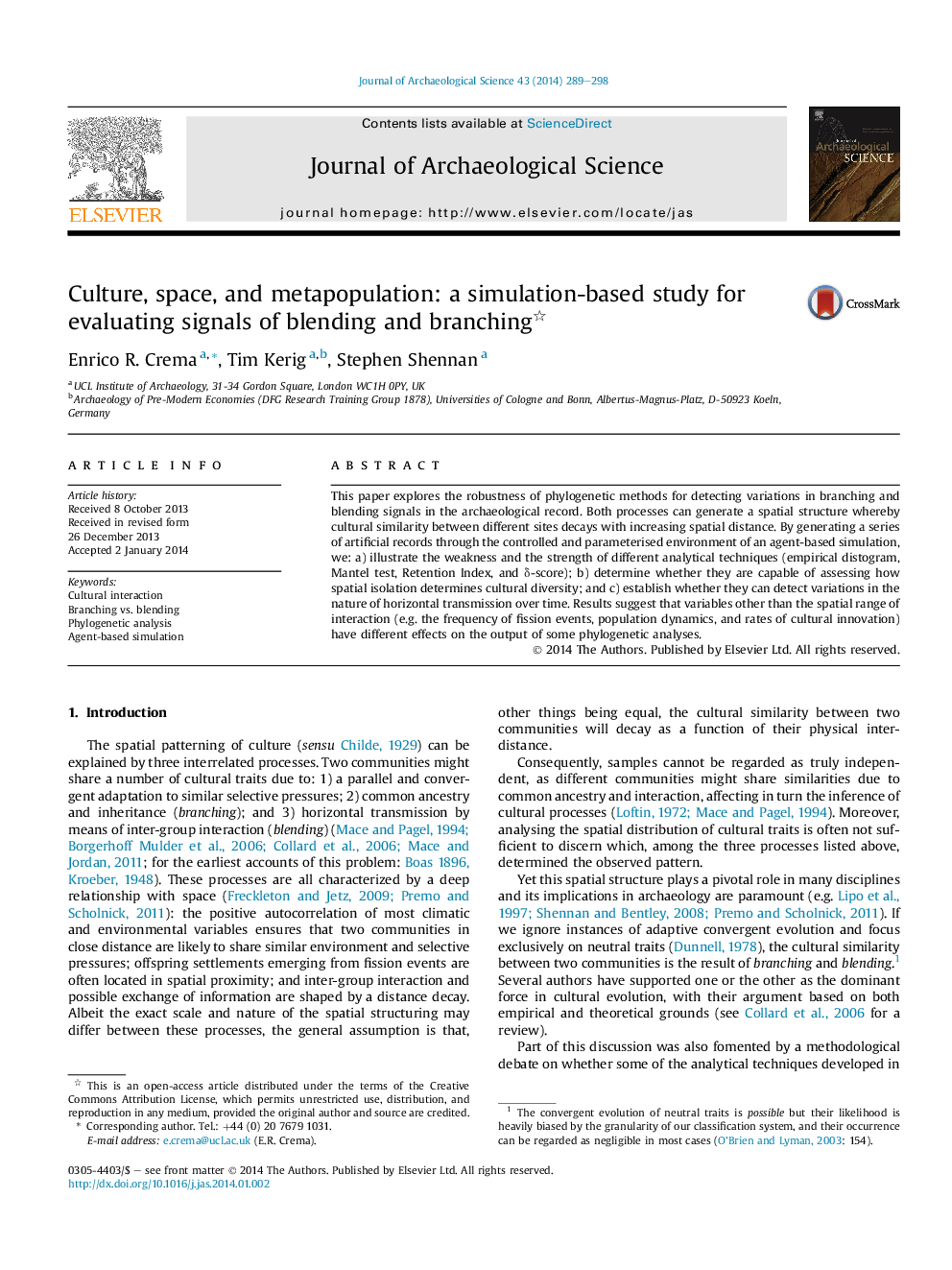| Article ID | Journal | Published Year | Pages | File Type |
|---|---|---|---|---|
| 7443739 | Journal of Archaeological Science | 2014 | 10 Pages |
Abstract
This paper explores the robustness of phylogenetic methods for detecting variations in branching and blending signals in the archaeological record. Both processes can generate a spatial structure whereby cultural similarity between different sites decays with increasing spatial distance. By generating a series of artificial records through the controlled and parameterised environment of an agent-based simulation, we: a) illustrate the weakness and the strength of different analytical techniques (empirical distogram, Mantel test, Retention Index, and δ-score); b) determine whether they are capable of assessing how spatial isolation determines cultural diversity; and c) establish whether they can detect variations in the nature of horizontal transmission over time. Results suggest that variables other than the spatial range of interaction (e.g. the frequency of fission events, population dynamics, and rates of cultural innovation) have different effects on the output of some phylogenetic analyses.
Related Topics
Physical Sciences and Engineering
Materials Science
Materials Science (General)
Authors
Enrico R. Crema, Tim Kerig, Stephen Shennan,
